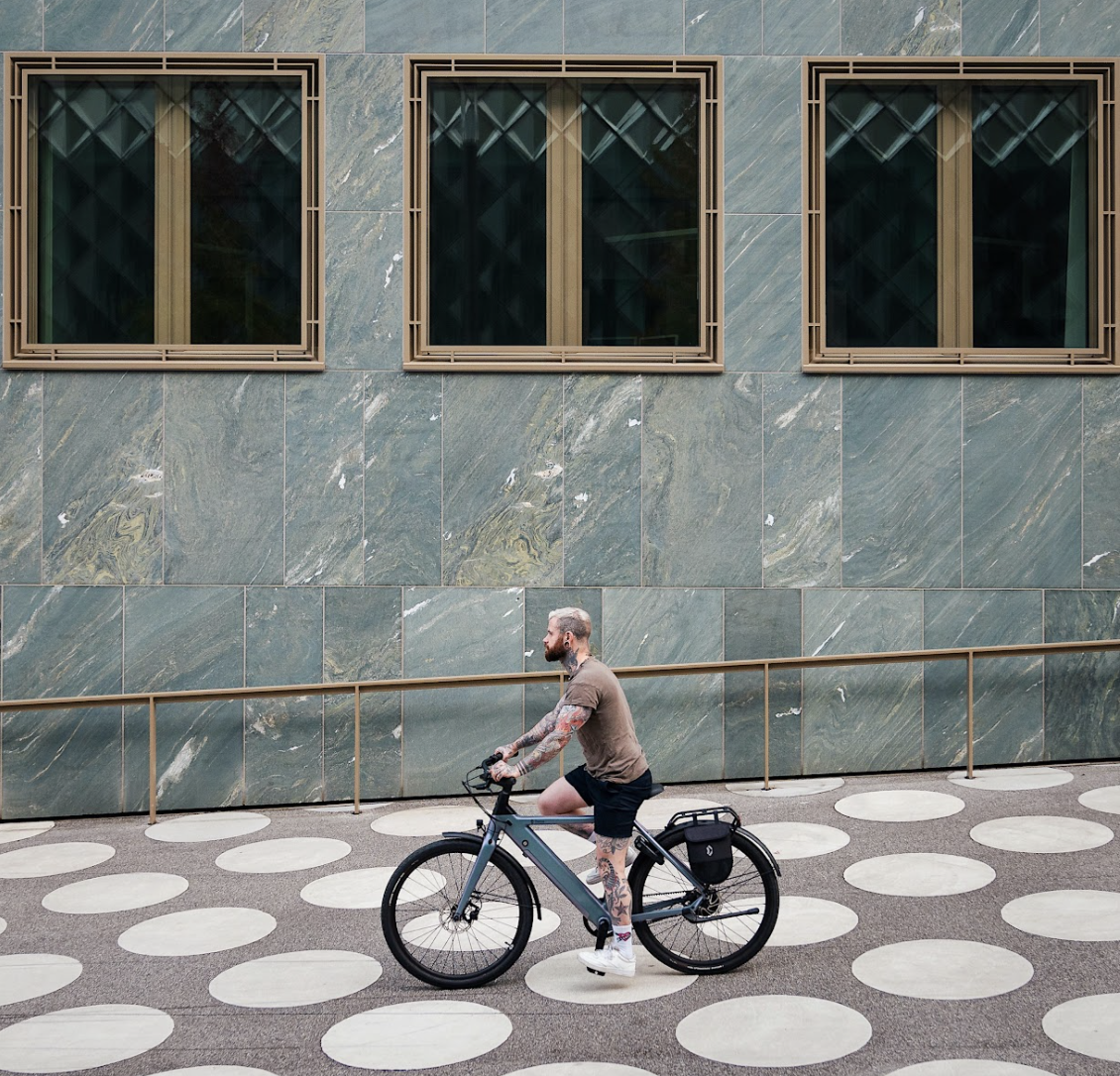Cities are placing more and more importance on sustainable transit. They’re evolving petroleum-powered buses and taxis into electric fleets, as well as welcoming e-mobility forms of transport like pay-by-the-kilometer carsharing and bike-sharing programs. Ebikes are part of the progress toward more sustainable cities too: powered by electricity, they can zip riders easily around cities—even hilly ones.
Transport is a big factor in CO2 energy-related emissions—it accounts for approximately 23% of them, according to Frauke Behrendt, Sally Cairns, David Raffo, and Ian Philips in an August 2021 paper on e-bikes in Sustainability journal. “The growing popularity of electrically-assisted bicycles does and can play a key role in the shift towards higher cycling rates and a transition towards more sustainable transport, including a modal shift away from car driving.”
It’s not just the cities that will benefit in the long-term from ebikes: it’s better for us, too. As we’ve written before, cycling has been shown to boost the mood—and they enable us to become more playful in our cities. Happier people make for happier cities, but it’s also great for your health overall.
The best way to drive people to choose sustainable options is to eliminate the reasons for them to choose something less sustainable. Here in Berlin, for example, more bike lanes were added during the pandemic. Ultimately, that move—to eliminate unsafe or nerve-wracking road conditions for cyclists by giving them their own space—boosted bike traffic 25%. That means each rider opted for cycling over a less-sustainable form of traffic.
Ebikes ultimately eliminate a lot of the obstacles with transport that lead people to choose less-sustainable options, whether it’s that the city is too hilly, the distances are too far, or transit schedules don’t align with their own. Basically, these barrier-breaking powers make it easier for people to say yes to ebiking—and therefore yes to sustainable transportation. Plus, their carbon footprint is way lower than all other forms of motorized transport.
It’s a huge part of the reason bikes can play an important role in meeting goals for climate change, as Behrendt, Cairns, Raffo, and Philips write. In fact, as they mention, researchers estimate that the capability of ebikes to replace car travel is more than double what regular bikes could achieve.
Let’s dig into these more below.
Ebikes emit a lot less pollution than cars and buses
It’s kind of a no-brainer, but ebikes have a relatively tiny carbon footprint compared to the other forms of transit we’re used to. In fact, they’re the most energy-efficient form of motorized transit: they get about 1,000 miles per gallon, or 425,144 kilometers per liter, if you were to convert their electrical use to gasoline terms.
According to a study by the U.S.-based Institute for Transportation and Development Policy, if we got to bikes and ebikes making up 22% of urban travel by 2050, we’d reduce emissions and save a cool $128 trillion while we were at it.
Ebikes make cycling an option in hilly cities
It’s mostly thanks to ebikes’ excellent handling of hills that ebikes are so great at being a substitute for cars. While we’re lucky to have a relatively flat city here at our Berlin HQ, cyclists in cities like Lisbon, Edinburgh, and San Francisco can benefit from a boost of power on the city slopes. “Electrically assisted cycling can make a major contribution to sustainable mobility,” wrote Frauke Behrendt, Sally Cairns, David Raffo, and Ian Philips in Sustainability journal in August. However, “for some people, hills are a barrier for cycling.”
Face it: cycling is all well and good, but if the option is to break a sweat the first thing each morning heading up a hill on the way to work, it’s probably not going to happen. As the authors of the Sustainability paper mention, research has found that cyclists tend to avoid slopes with more than a 2% incline and that the proportion of residents that cycle to work has a strong correlation with hilliness in the surrounding area.
“In a 2002 survey of 600 e-bike users in the UK, 13% of respondents mentioned ‘help with hills’ as reason for buying on electric bike and 37% reported the ease of use on hills as a main advantage of the e-bike over ordinary bicycles,” write the Sustainability authors.
Ebikes can cover greater distances faster than non-electric bikes
Not only do e-bikes eliminate topographical barriers—they also erase distance-minded ones as well. Biking the 11 kilometers from the Berlin district of Friedrichshain to meet a friend for dinner in Charlottenburg is a lot less tiring (and long, and sweaty) when you have an electric motor to kick in and take the work out of some of it.
The Sustainability authors mentioned that a small study of eight riders showed a 35% savings in travel time on hilly routes and a 15% travel time savings on flat routes compared to non-electric cyclists. Thanks to a little electric assistance, cycles are going to be able to cover greater expanses of the city faster, too, meaning ebikes expand the range of places riders can go in the city, increasing the number of times people will say yes to a sustainable transit option.
Ebikes let you keep your own schedule
One of the biggest gripes people have about public transit is that it doesn’t come often enough, or that the schedule for their buses or trains doesn’t align with their personal itineraries. If a wait for a bus is 16 minutes and you can afford a taxi, chances are you might jump in the taxi. With ebikes, you’re always empowered to take the route you want to take and to come and go when you want to —with a free mood boost along the way.
Riding an ebike isn't just a stylish way to move around the city—it's also a more sustainable option. With a Dance One, you're signing up to feel good, look good, and most importantly, do good. Join the waitlist to enjoy your own.
